Don't Waste My Time on JD Supra
 This is by by Carolyn Elefant. Right on Carolyn, I totally agree that too many people are abusing JD Supra by uploading junk, advertisements and vacuous marketing advice:
This is by by Carolyn Elefant. Right on Carolyn, I totally agree that too many people are abusing JD Supra by uploading junk, advertisements and vacuous marketing advice:
So, this afternoon, I was browsing through Google search results, hunting for fodder for my Nolo Legal Marketing Blawg when a new article at JD Supra, with an intriguing title – Law Firm Marketing: Beyond the Blog popped up in my feed. Anticipating a provocative and fairly substantial article or even White Paper, I clicked on over only to discover this: three flimsy paragraphs a little more than a half page, written by some marketing firm called The Net Impact (though it’s somehow related to this company, Auctorilaw which is mentioned in the JDSupra profile) and reminding lawyers that marketing cannot depend upon social media alone and that they cannot overlook more traditional networking. As an example, the article mentions the St. Louis firm, Sandburg, Phoenix & Von Gottard,which held a wine tasting for the local Chamber of Commerce. That’s it.
If this poor excuse for content had been packaged in the form of a blog post, I’d have scanned through it in two seconds in my RSS reader and promptly forgotten it, just as I do with 90 percent of the other drivel that I plow through on a daily basis. But this garbage was billed as an article on JD Supra — a site which I’ve always associated with real content, either in the form of legal pleadings, white papers or even biglaw newsletters (at least, that’s how I’ve always used the site) and so I felt as if I’d been taken duped. Plus, whereas a lousy blog post would take just a second or two to delete, here, I had to exit my reader and actually click through to JD Supra to bring the article up on my screen.
Clearly, this marketing group posted this article on JD Supra to take advantage of the site’s Press Release services and to gain extra SEO. Nice for the marketers, but frankly, it annoyed the heck out of me. No way I’d ever use a marketing company that thinks it’s OK to impose on reader’s time to grab some SEO.
Moreover, this isn’t the first time I’ve seen JD Supra abused in this manner. Lots of lawyers simply convert simple blog posts to PDF and throw them up on JD Supra for added exposure. I’m all for re-purposing and re-distributing content, but I don’t want to see the exact same content in twelve different places. If I’m going to a site like JD Supra, I both want — and expect — some kind of value add – maybe a bunch of blog posts aggregated into an ebook, or a lengthier article that expands on a shorter blog post. People have started pulling the same stunt with Slideshare as I posted a few months back, using it to upload press releases and all kinds of junk other than slides.
Though I’d love for sites like JD Supra or Slideshare to monitor user uploads, I realize that this solution is not feasible, at least so long as these sites remain largely free of charge. So it’s up to users to police themselves, and for others to call out the conduct when they don’t.
 From
From 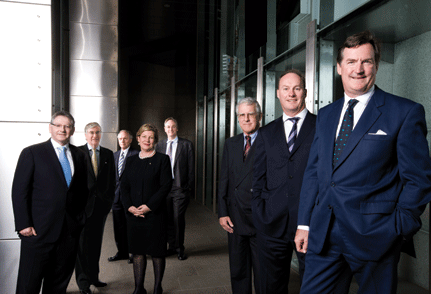 When I train lawyers in business development, I always recommend they join an organization of clients and get on the the board of directors. The idea is that if there are 300 members, you can shake hands with all of them, or simply get on the board of directors and everyone will know you. Trade associations are excellent sources of new business.
When I train lawyers in business development, I always recommend they join an organization of clients and get on the the board of directors. The idea is that if there are 300 members, you can shake hands with all of them, or simply get on the board of directors and everyone will know you. Trade associations are excellent sources of new business. From
From  It's likely that
It's likely that  Corporate law departments were asked to forecast their demand for legal services across 28 different legal practice areas in a new survey. Among these, regulatory was the highest, with 44 percent of participants expecting an increase in demand in this area. Other areas with significant forecasted increases in demand include employment and labor (39 percent), government relations (35 percent) and international (35 percent).
Corporate law departments were asked to forecast their demand for legal services across 28 different legal practice areas in a new survey. Among these, regulatory was the highest, with 44 percent of participants expecting an increase in demand in this area. Other areas with significant forecasted increases in demand include employment and labor (39 percent), government relations (35 percent) and international (35 percent).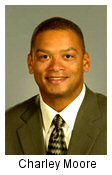 Half of small business owners (51 percent) say the main reason they would avoid seeking legal counsel is because it is too expensive. However, one in four say legal issues pose the biggest risk to their company, according to a new survey commissioned by
Half of small business owners (51 percent) say the main reason they would avoid seeking legal counsel is because it is too expensive. However, one in four say legal issues pose the biggest risk to their company, according to a new survey commissioned by .jpg) Social media marketing maven
Social media marketing maven  Chris Gloede
Chris Gloede.jpg) A new survey of 400 corporate counsel by Fulbright & Jaworski finds that regulatory litigation, suits by bigger companies, and industries like real estate, manufacturing, energy and health care will drive new growth in litigation.
A new survey of 400 corporate counsel by Fulbright & Jaworski finds that regulatory litigation, suits by bigger companies, and industries like real estate, manufacturing, energy and health care will drive new growth in litigation. 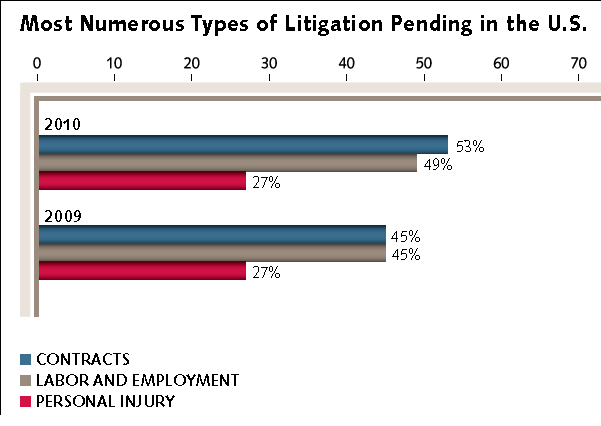
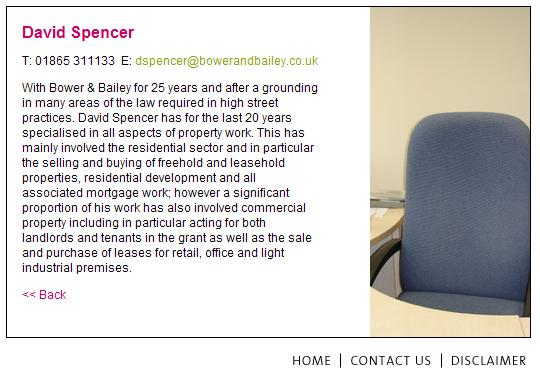
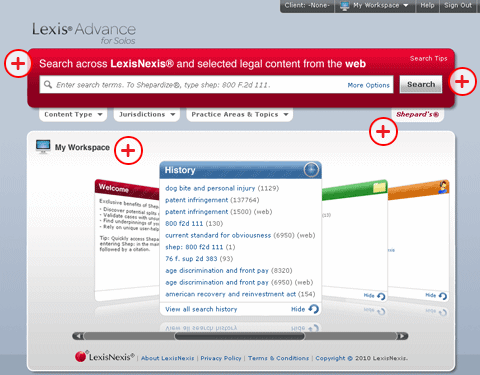 Lexis Advance for Solos is offered at a flat monthly subscription rate, providing access to all available features and the premium content package. The monthly rate for one attorney is $175. The price for a second attorney in a two-lawyer firm is $140 (a 20% discount). That means that the total monthly price for a 2-lawyer firm is $315 ($175+140). Customers can easily budget because the cost is predictable and there is no risk of out-of-plan charges.
Lexis Advance for Solos is offered at a flat monthly subscription rate, providing access to all available features and the premium content package. The monthly rate for one attorney is $175. The price for a second attorney in a two-lawyer firm is $140 (a 20% discount). That means that the total monthly price for a 2-lawyer firm is $315 ($175+140). Customers can easily budget because the cost is predictable and there is no risk of out-of-plan charges. This is a guest blog by
This is a guest blog by  Janet Raasch has a
Janet Raasch has a  This is an excerpt of a MyLegal.com interview by Lisa Dimonte with me.
This is an excerpt of a MyLegal.com interview by Lisa Dimonte with me. 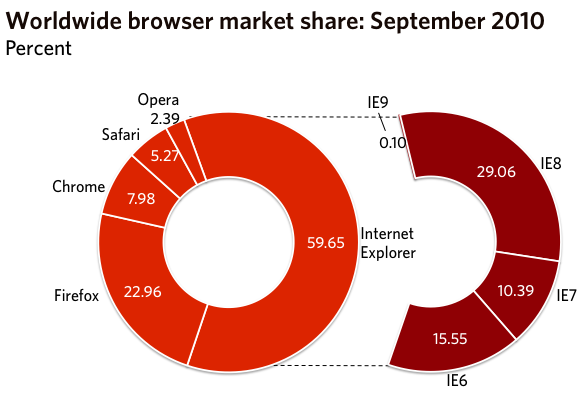
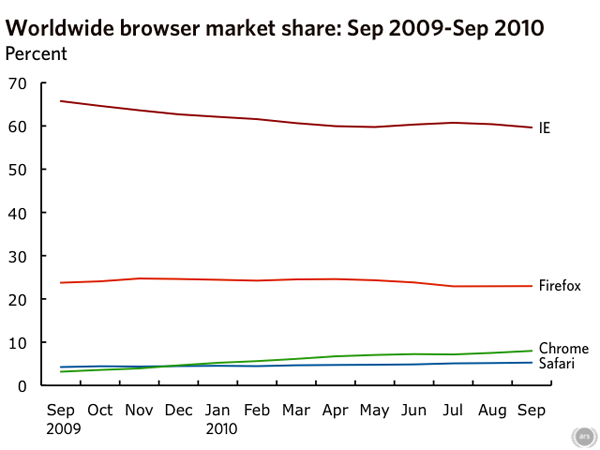 Of course, browser market share is a difficult thing to measure, as there’s no guarantee that
Of course, browser market share is a difficult thing to measure, as there’s no guarantee that 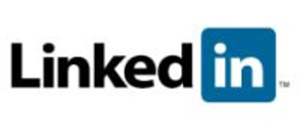 Lawyer and markeing expert Cole Silver just interviewed me to discuss my upcoming presentation at "
Lawyer and markeing expert Cole Silver just interviewed me to discuss my upcoming presentation at "


